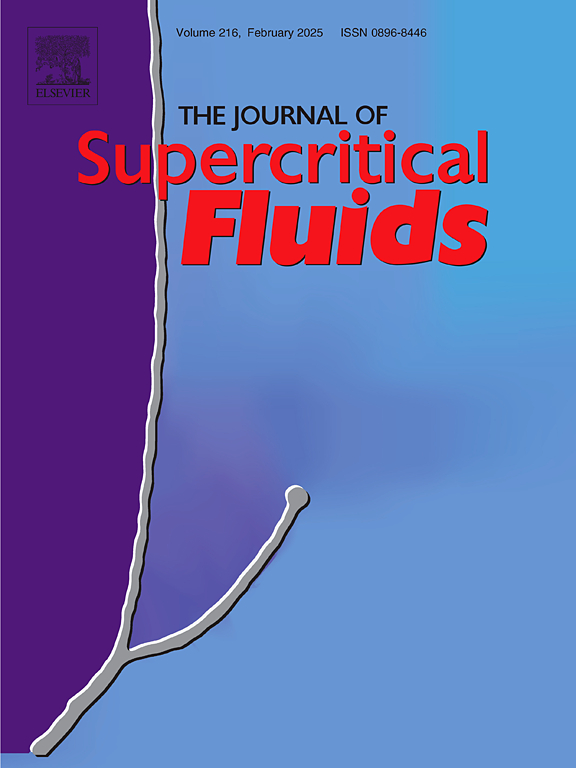超临界二氧化碳中四丁基卤化铵熔点的降低
IF 3.4
3区 工程技术
Q2 CHEMISTRY, PHYSICAL
引用次数: 0
摘要
离子液体已经作为双相反应介质的一部分进行了研究,或者已经被证明是捕获二氧化碳(CO2)的一种选择。它们在超临界CO2存在下的相行为在高压程序的设计中往往是至关重要的。研究了四丁基卤化铵在0.1 ~ 40 MPa压力下的熔融行为。测量使用可变体积视图单元和我们研究小组开发的自动化设备并行进行。该装置基于介质在样品中的溶解及其摩尔体积变化的综合效应来检测相变。将新开发的测量方法与现有的目测方法进行了比较。四丁基碘化铵的熔点下降幅度最大(33.7℃),约为15 MPa。相比之下,在相同的条件下,溴化物和氯化物盐的熔点下降(MPD)更低。本文章由计算机程序翻译,如有差异,请以英文原文为准。
Melting point depression of tetrabutylammonium halides in supercritical carbon dioxide
Ionic liquids have already been studied as parts of biphasic reaction media or have been demonstrated as an option for capturing carbon dioxide (CO2). Their phase behaviour in the presence of supercritical CO2 is often of key importance in the design of high-pressure procedures. The melting behaviour of tetrabutylammonium halides was investigated from 0.1 to 40 MPa pressure. Measurements were taken in parallel using a variable-volume view-cell and an automated device developed by our research group. The new device detects the phase transition based on the combined effect of the dissolution of the medium into the sample and the change in its molar volume. The operation of the newly developed measurement method was compared to the well-established visual approach. Tetrabutylammonium iodide exhibited the greatest melting point depression (33.7 °C), at approximately 15 MPa. In comparison, melting point depressions (MPD) of the bromide and chloride salts were lower under the same conditions.
求助全文
通过发布文献求助,成功后即可免费获取论文全文。
去求助
来源期刊

Journal of Supercritical Fluids
工程技术-工程:化工
CiteScore
7.60
自引率
10.30%
发文量
236
审稿时长
56 days
期刊介绍:
The Journal of Supercritical Fluids is an international journal devoted to the fundamental and applied aspects of supercritical fluids and processes. Its aim is to provide a focused platform for academic and industrial researchers to report their findings and to have ready access to the advances in this rapidly growing field. Its coverage is multidisciplinary and includes both basic and applied topics.
Thermodynamics and phase equilibria, reaction kinetics and rate processes, thermal and transport properties, and all topics related to processing such as separations (extraction, fractionation, purification, chromatography) nucleation and impregnation are within the scope. Accounts of specific engineering applications such as those encountered in food, fuel, natural products, minerals, pharmaceuticals and polymer industries are included. Topics related to high pressure equipment design, analytical techniques, sensors, and process control methodologies are also within the scope of the journal.
 求助内容:
求助内容: 应助结果提醒方式:
应助结果提醒方式:


